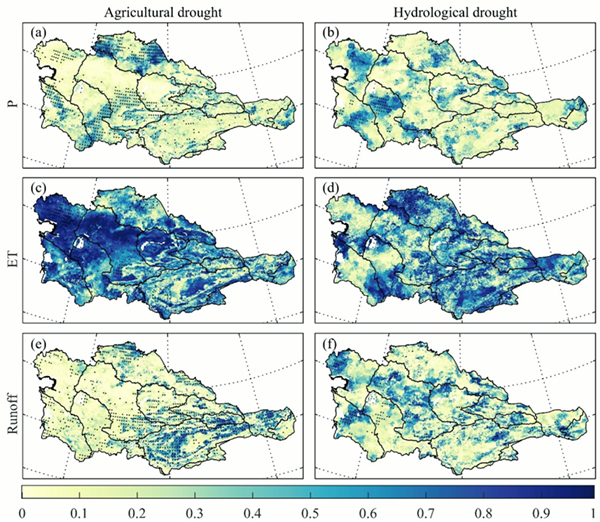Researchers Find Actual Evapotranspiration Dominates Drought in Central Asia
2023-10-11
The Central Asian region is sensitive to global climate change and prone to drought. However, the dominant role of water income and consumption on drought events in the region is still poorly understood. Prof. HAO Xingming's team at the Xinjiang Institute of Ecology and Geography, Chinese Academy of Sciences, found that actual evapotranspiration has a significant impact on drought in Central Asia. Further studies showed that droughts in Central Asia intensified between 2000 and 2020, primarily in agricultural and hydrological droughts, and that the increase in actual evapotranspiration exacerbated and dominated both droughts to varying degrees. This work was published in Remote Sensing on September 16.
Precipitation, soil moisture (SM), terrestrial water storage (TWS) and total lake area (LA) in Central Asia showed decreasing trends during the study period, with a significant increase in agricultural and hydrological droughts and a slight increase in meteorological droughts. The trends and characteristics of different types of droughts exhibit significant differences in spatial-temporal distribution.
Compared to precipitation and runoff, actual evapotranspiration played a dominant role in agricultural and hydrological drought in Central Asia, with relative contributions of 64.38 and 51.04 percent, respectively. Moreover, nearly half of the region showed an increase in actual evapotranspiration, which exacerbated agricultural and hydrological drought. Therefore, actual evapotranspiration plays a crucial role in causing drought in Central Asia.
The work was supported by the Independent Deployment Project, the Xinjiang Institute of Ecology and Geography, the Chinese Academy of Sciences, and the Science Fund for Distinguished Young Scholars of Xinjiang Autonomous Region.
Article link: https://www.mdpi.com/2072-4292/15/18/4557/htm

Figure: Contributions of precipitation (P) (a, b), evapotranspiration (ET) (c, d), and runoff (e, f) to agricultural drought intensity (a, c, e) and hydrologic drought intensity (b, d, f). Black points indicate values of statistical significance (p < 0.05). (Image by Prof. HAO Xingming’s group)
Contact:
LIU Jie
State Key Laboratory of Desert and Oasis Ecology, Xinjiang Institute of Ecology and
Geography, Chinese Academy of Sciences
Phone: 0991-7885505
E-mail: liujie@ms.xjb.ac.cn



